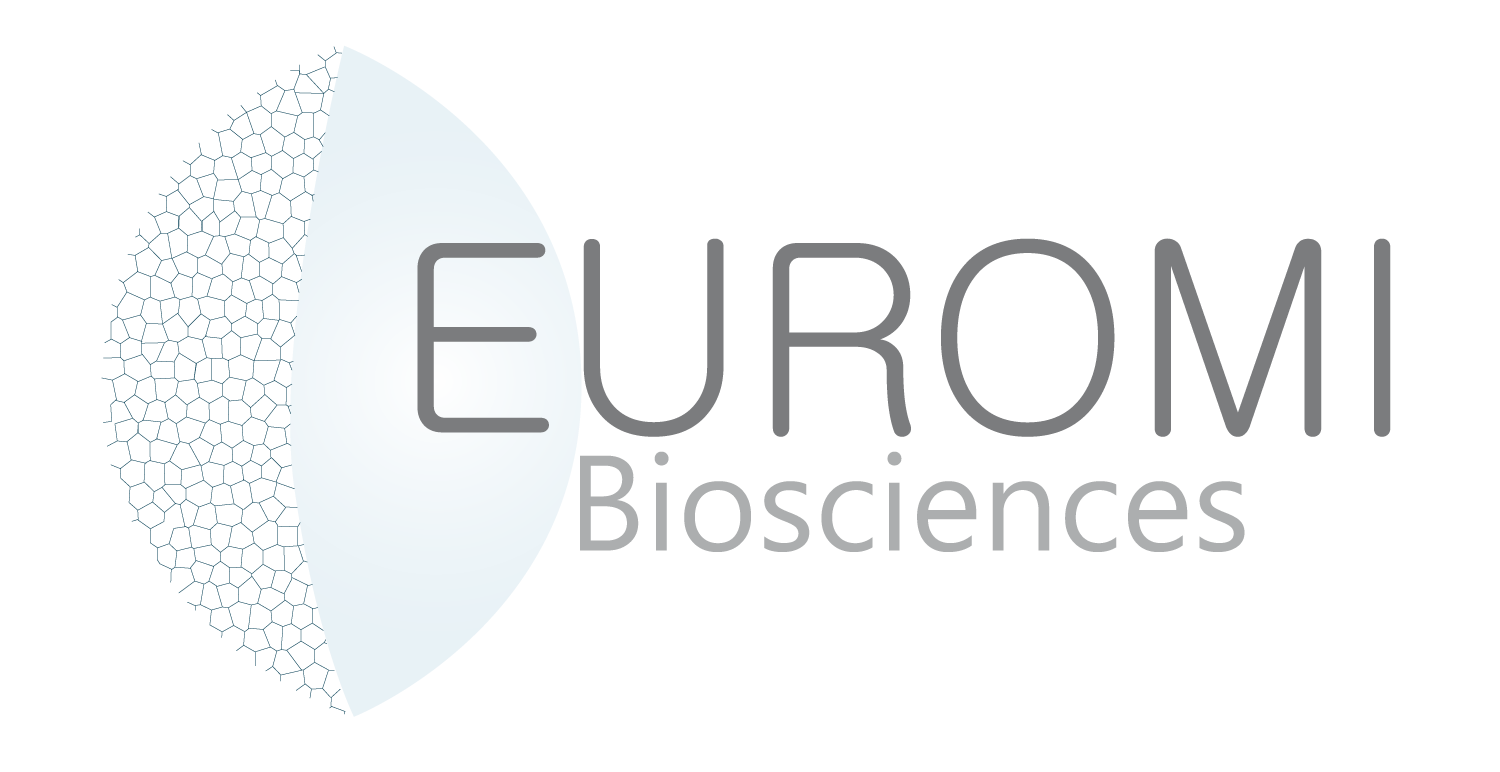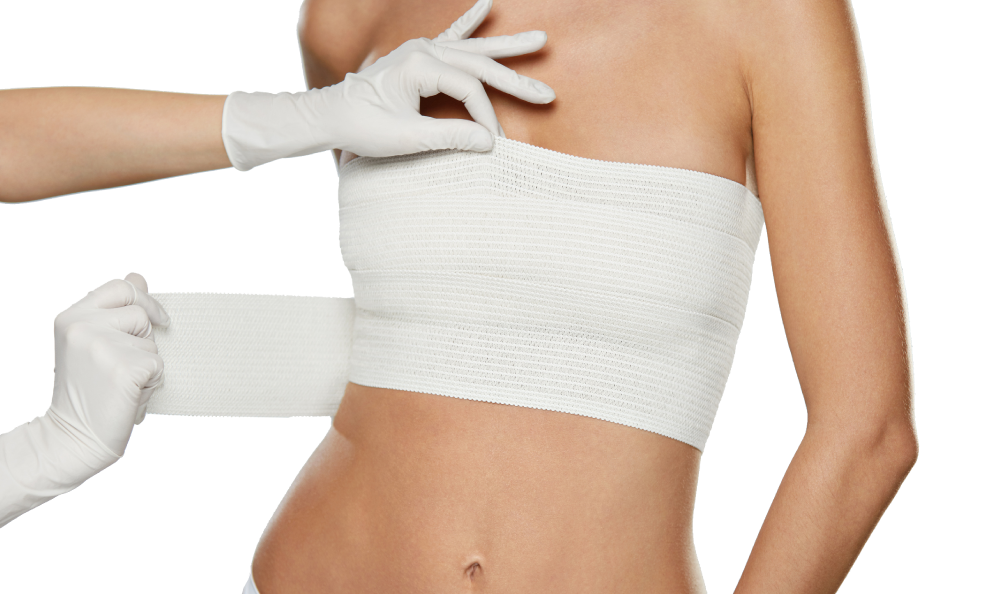Different decisions must be made before your intervention:
which implantation method to favor? Which positioning is the most suitable?
How is a breast implant placement procedure performed?
We help you see more clearly.

Implantation method
and scars
The surgical procedure consists in implanting the implant(s) in such a way as to achieve the desired
bust: the surgeon will slide the breast implant through an incision, as small as possible, to facilitate
implantation while minimising post-operative scars.
Before the procedure, the surgeon will discuss this incision with you. The scar will then be concealed
in 3 different ways:
➊
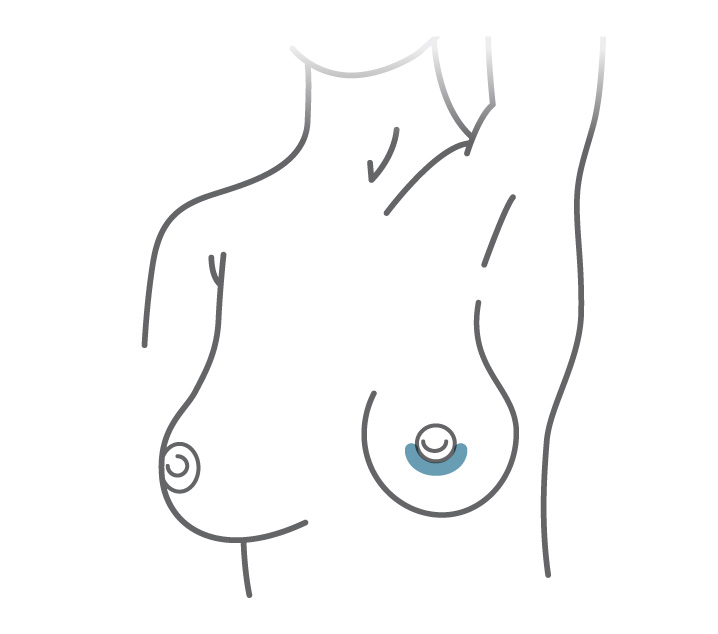
around the edge of the areola
PERIAREOLAR INCISION
➋
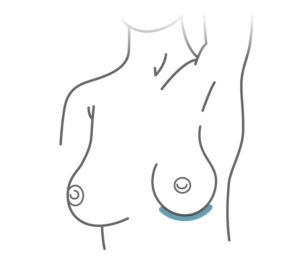
in the fold below the breast
INFRAMAMMARY INCISION
➌
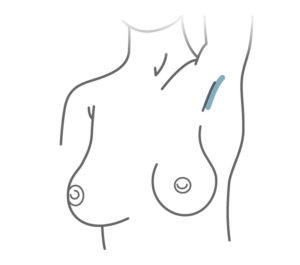
in the armpit
AXILLARY INCISION
Apart from cases of breast reconstruction, there are no scars other than those left by these incisions:
scars are therefore minimal and very discrete.
Implantation method
and scars
The surgical procedure consists in implanting the implant(s) in such a way as to achieve the desired
bust: the surgeon will slide the breast implant through an incision, as small as possible, to facilitate
implantation while minimising post-operative scars.
Before the procedure, the surgeon will discuss this incision with you. The scar will then be concealed
in 3 different ways:
➊

around the edge of the areola
PERIAREOLAR INCISION
➋

in the fold below the breast
INFRAMAMMARY INCISION
➌

in the armpit
AXILLARY INCISION
Apart from cases of breast reconstruction, there are no scars other than those left by these incisions: scars are therefore minimal and very discrete.
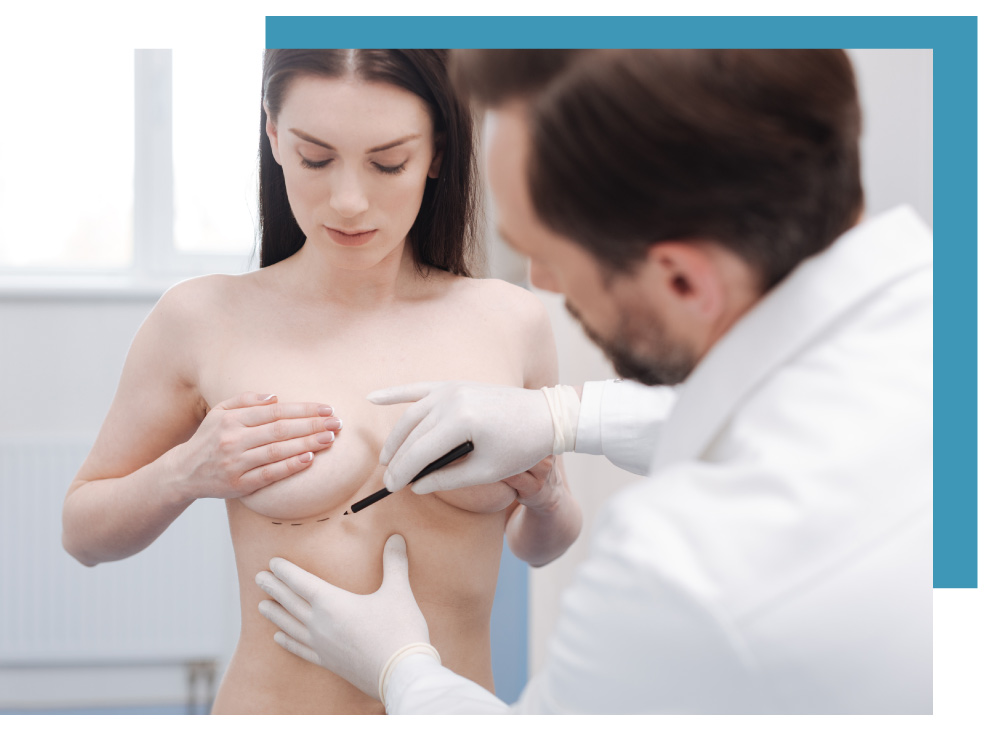
Positioning of
the implant
The shape and volume of the implant, your morphology, and the surgeon’s approach may determine the type of incision. But the main criterion will be the positioning of the implant. However the implant is positioned, there must be sufficient supple skin to avoid excessive tautness.
The implant can be positioned in different ways:

Positioning of
the implant
The shape and volume of the implant, your morphology, and the surgeon’s approach may determine the type of incision. But the main criterion will be the positioning of the implant. However the implant is positioned, there must be sufficient supple skin to avoid excessive tautness.
The implant can be positioned in different ways:
THE IMPLANT IS INSERTED DIRECTLY UNDER THE MAMMARY GLAND
(Retroglandular insertion)
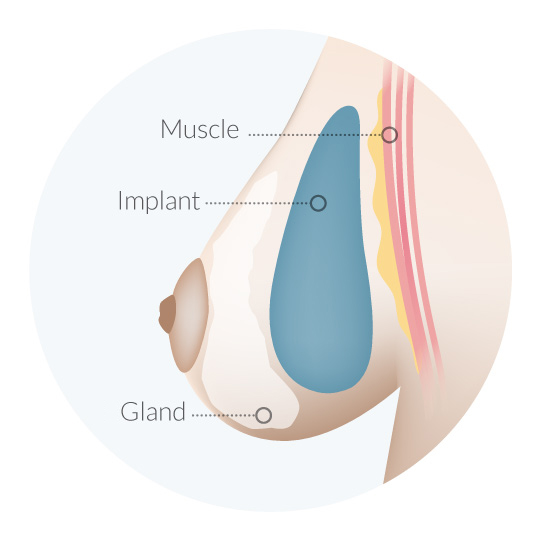
THE IMPLANT IS INSERTED UNDER THE PECTORAL MUSCLE
(Retropectoral or retromuscular insertion)
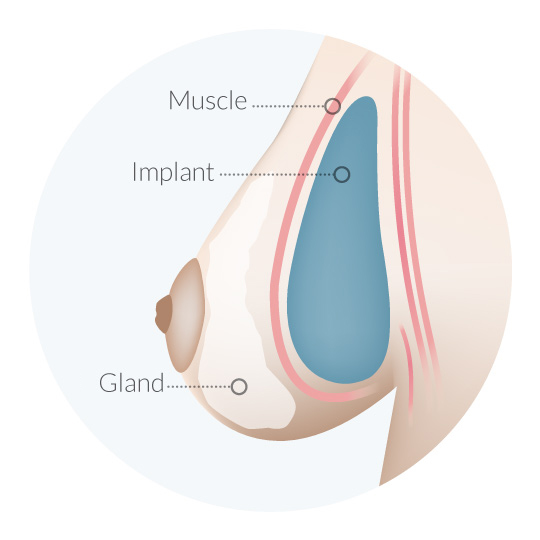
So that it is less noticeable to the eye and to the touch, with an even more natural appearance:
THE IMPLANT IS INSERTED IN A DUAL PLANE POSITION
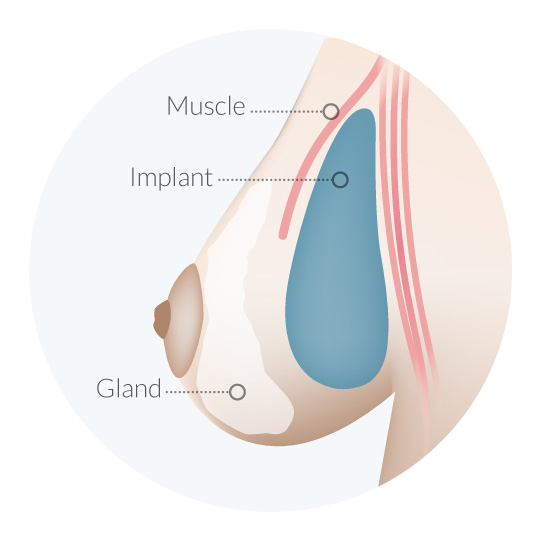
The implant is placed behind the muscle in the upper part of the breast and behind the gland in the lower part.
This dual position combines the advantages of the two previous techniques. It has the advantage of interposing the muscle naturally on the upper section and of integrating the implant into the breast in the lower section.
Information from the clinical literature review.
THE IMPLANT IS INSERTED DIRECTLY UNDER THE MAMMARY GLAND
(Retroglandular insertion)
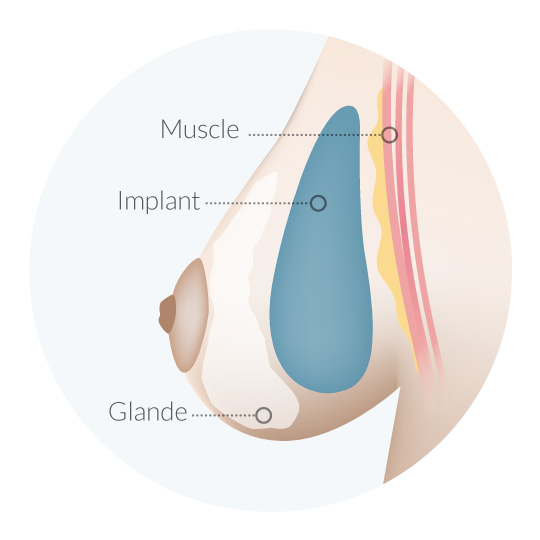
THE IMPLANT IS INSERTED UNDER THE PECTORAL MUSCLE
(Retropectoral or retromuscular insertion)

So that it is less noticeable to the eye and to the touch, with an even more natural appearance:
THE IMPLANT IS INSERTED IN A DUAL PLANE POSITION

The implant is placed behind the muscle in the upper part of the breast and behind the gland in the lower part.
This dual position combines the advantages of the two previous techniques. It has the advantage of interposing the muscle naturally on the upper section and of integrating the implant into the breast in the lower section.
Information from the clinical literature review.

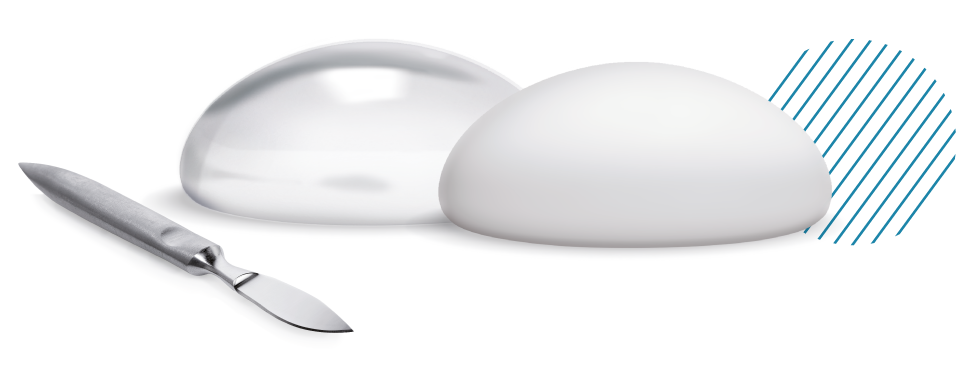

Description of
the procedure
The insertion of breast implants is one of the most common aesthetic surgery procedures.
The surgical procedure consists in:
› Detaching the tissue to prepare sufficient space (the pocket) for implantation.
› Inserting the implant into the chosen incision behind or in front of the pectoralis major muscle, as decided during the previous consultations with your surgeon.
The procedure is performed in the operating theatre, under general anaesthesia, and lasts from half an hour to an hour and a half* for aesthetic procedures. For reconstructive surgery, the procedure may last longer (two hours). At the end of the procedure, the surgeon may leave a drainage system in place for a few days.
This period of time may vary slightly depending on the surgeon’s surgical protocol, the procedure chosen or the need for an additional procedure (ptosis repair…). In some cases, the procedure may be performed on an outpatient basis with a very short hospital stay (the patient comes in and leaves the same day).

Description of
the procedure
The insertion of breast implants is one of the most common aesthetic surgery procedures.
The surgical procedure consists in:
› Detaching the tissue to prepare sufficient space (the pocket) for implantation.
› Inserting the implant into the chosen incision behind or in front of the pectoralis major muscle, as decided during the previous consultations with your surgeon.
The procedure is performed in the operating theatre, under general anaesthesia, and lasts from half an hour to an hour and a half* for aesthetic procedures. For reconstructive surgery, the procedure may last longer (two hours). At the end of the procedure, the surgeon may leave a drainage system in place for a few days.
This period of time may vary slightly depending on the surgeon’s surgical protocol, the procedure chosen or the need for an additional procedure (ptosis repair…). In some cases, the procedure may be performed on an outpatient basis with a very short hospital stay (the patient comes in and leaves the same day).
